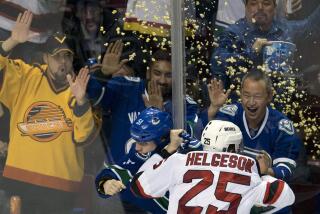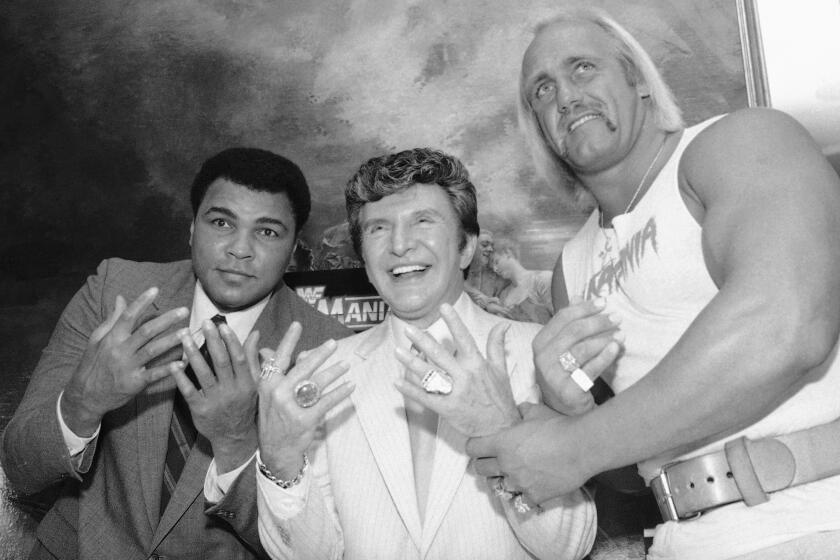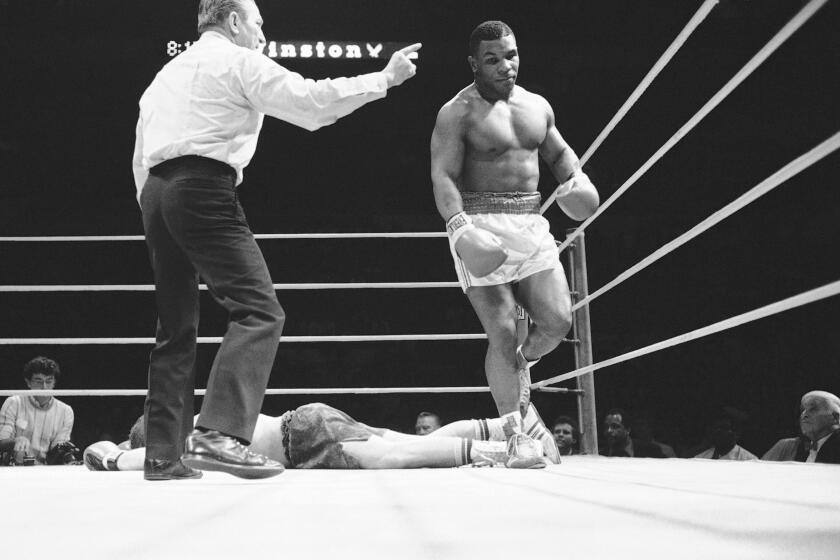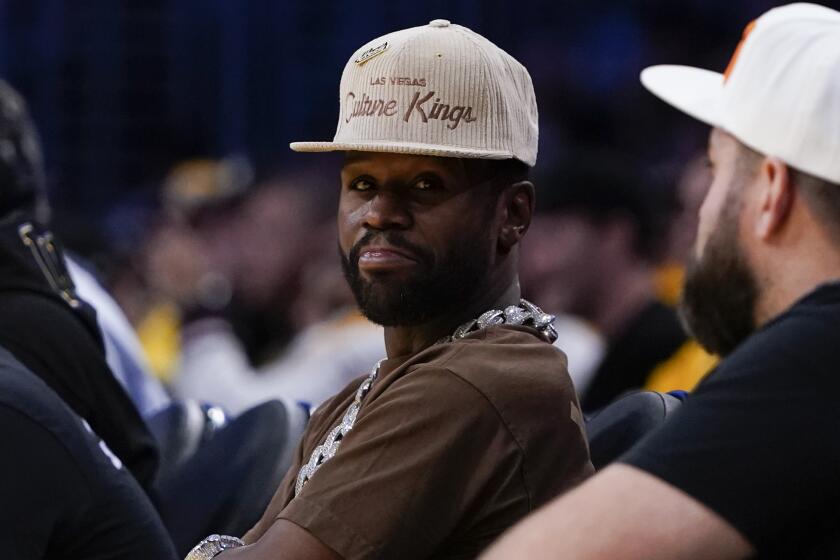Column: Here’s what Canelo Alvarez and Gennady Golovkin have to do differently in their rematch
Pack extra ice. Check the hours of the nearby blood banks. Make sure plastic surgeons are on standby.
Gennady Golovkin and Canelo Alvarez are fighting again.
The rematch promises to be more violent than their initial encounter in September, which ended in a draw. If they fought on horseback last time, they will be rolling into the ring in tanks for the sequel on May 5.
Escalation of this kind is noteworthy, especially at this level of boxing.
Rematches of particularly ferocious contests are often lesser versions of the originals. The post-fight autopsies of the first matches often reveal the degree of violence was unnecessary, if not counterproductive, prompting the combatants to adjust.
Fighters are brave; they aren’t stupid.
Only in this case, a review of the entertaining but ultimately dissatisfying draw shows something else. As much damage as Golovkin and Alvarez inflicted on each other over 12 savage rounds, as much as they marked up each other’s faces, they weren’t destructive enough.
Each fighter’s route to victory in the second go-around calls for more — more punches, more power, more blood.
They will deliver. Golovkin and Alvarez aren’t fighters who prioritize safety over ambition, evidenced by how they agreed this week to an immediate rematch.
Whatever you thought of how the fight in September was scored, the verdict was fair. And it’s easy to identify the rounds that cost each fighter the victory he thought he deserved.
By his standards, Golovkin was cautious in the early rounds as he tried to close the distance on his retreating opponent while being respectful of his power. Alvarez capitalized on Golovkin’s reluctance and landed a series of vicious body shots.
Golovkin lost the first three rounds on judge Adalaide Byrd’s nonsensical scorecard — Byrd scored the fight for Alvarez, 118-110 — but also the first two rounds on the other judges’ cards. Don Trella scored the fight, 114-114. If Golovkin had pocketed an early round on Trella’s card, he would have won a split decision.
Alvarez allowed Golovkin to take control of the fight in the middle rounds. Dave Moretti awarded Golovkin every round from the third through the ninth; Trella scored only one of those seven rounds for Alvarez.
Alvarez still made Golovkin miss, and countered well at times, but had trouble keeping up with Golovkin’s increased output. The disparity in volume was reflected in the scores.
The deficit required Alvarez to win the last three rounds on Trella’s and Moretti’s cards to salvage a draw.
As well as they performed, the fighters were bothered by the outcome. When the scores were announced, Golovkin raised his eyebrows and forced a smile. Alvarez shook his head.
“I won seven, eight rounds of the fight, easily,” Alvarez said in Spanish.
Golovkin argued he was robbed. “Terrible,” he said.
The remedy for Golovkin is simple: Start faster.
Alvarez will face a more difficult task. He has a history of fading in fights but will somehow have to match the activity of Golovkin, who in his mid-30s remains a cardiovascular marvel.
Alvarez presumably will work to improve his conditioning, but as Floyd Mayweather Jr. once said of stamina-challenged Oscar De La Hoya, “You’re always in the best shape of your life, but you’re always getting tired.”
Alvarez has the added responsibility of winning back the public, which viewed the Kazakh Golovkin not only as the rightful winner, but also “more Mexican” in style.
The fight was violent but Golovkin nonetheless complained that Alvarez moved too much.
“I like [the] Mexican style,” Golovkin said. “I want a true fight, like close distance. I want [a] big drama show.”
If he wants to win the rematch, that won’t be a choice. It will be a requirement. For him and for Alvarez.
Follow Dylan Hernandez on Twitter @dylanohernandez
More to Read
Get our high school sports newsletter
Prep Rally is devoted to the SoCal high school sports experience, bringing you scores, stories and a behind-the-scenes look at what makes prep sports so popular.
You may occasionally receive promotional content from the Los Angeles Times.







